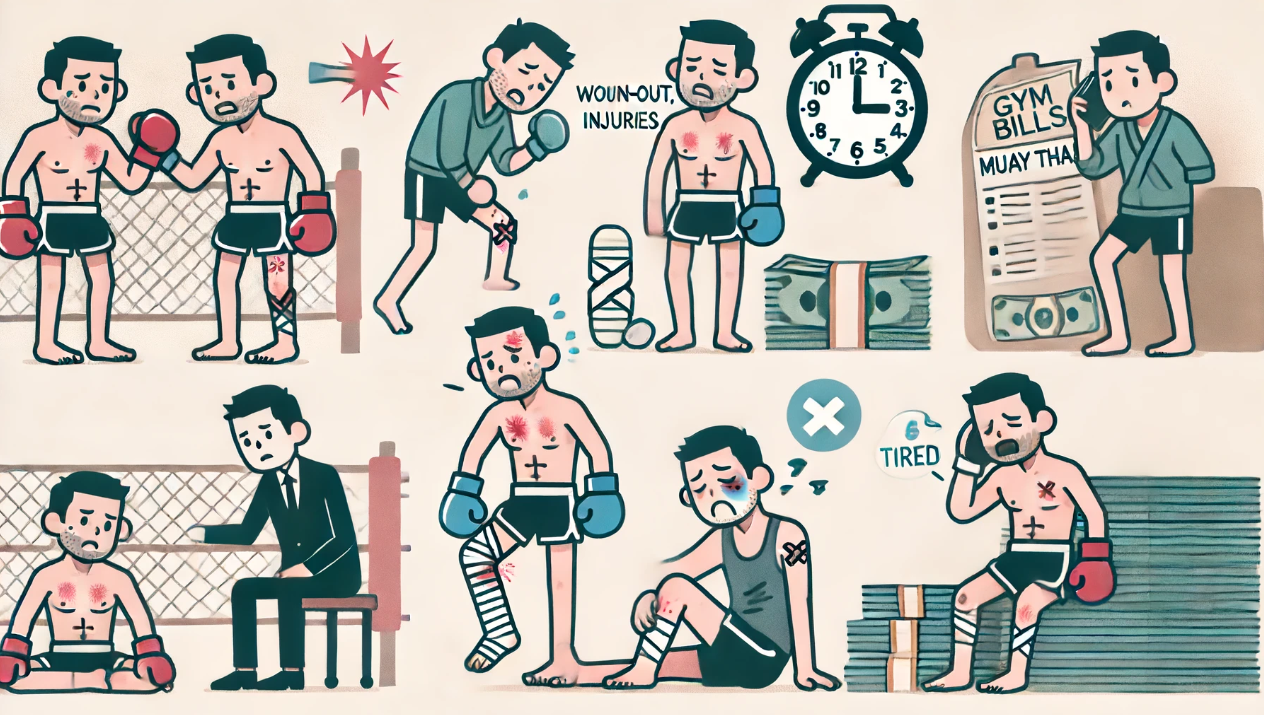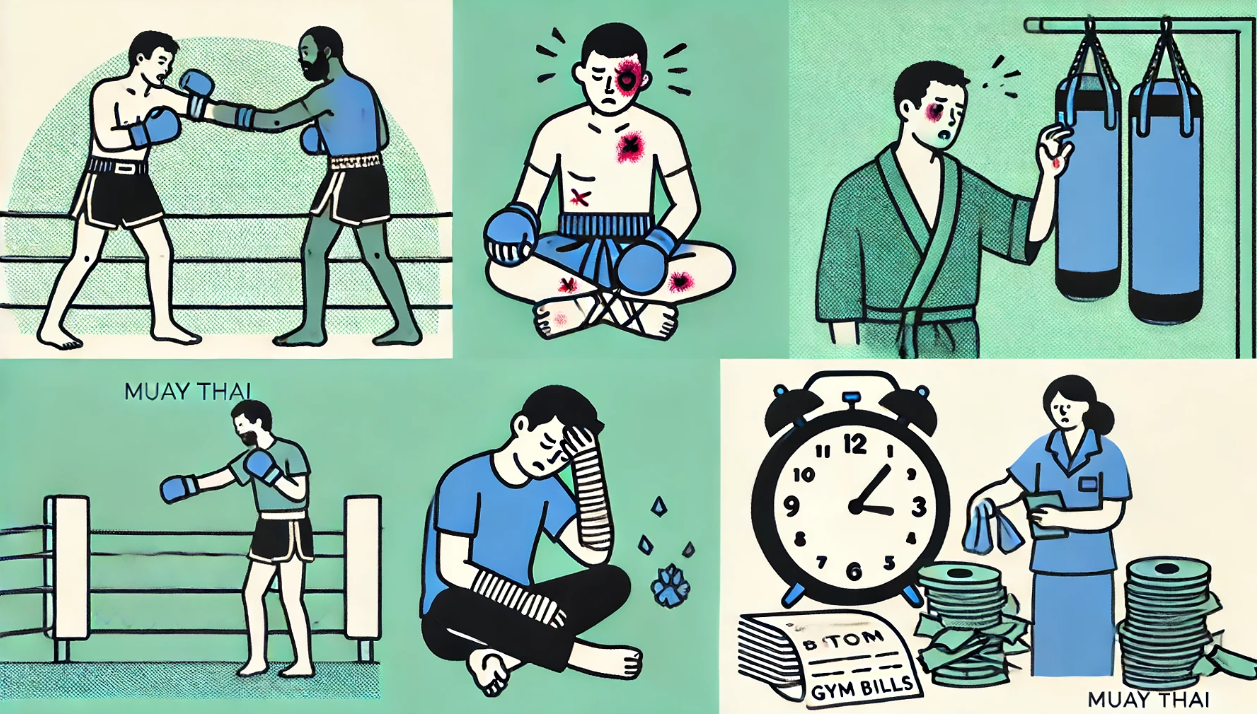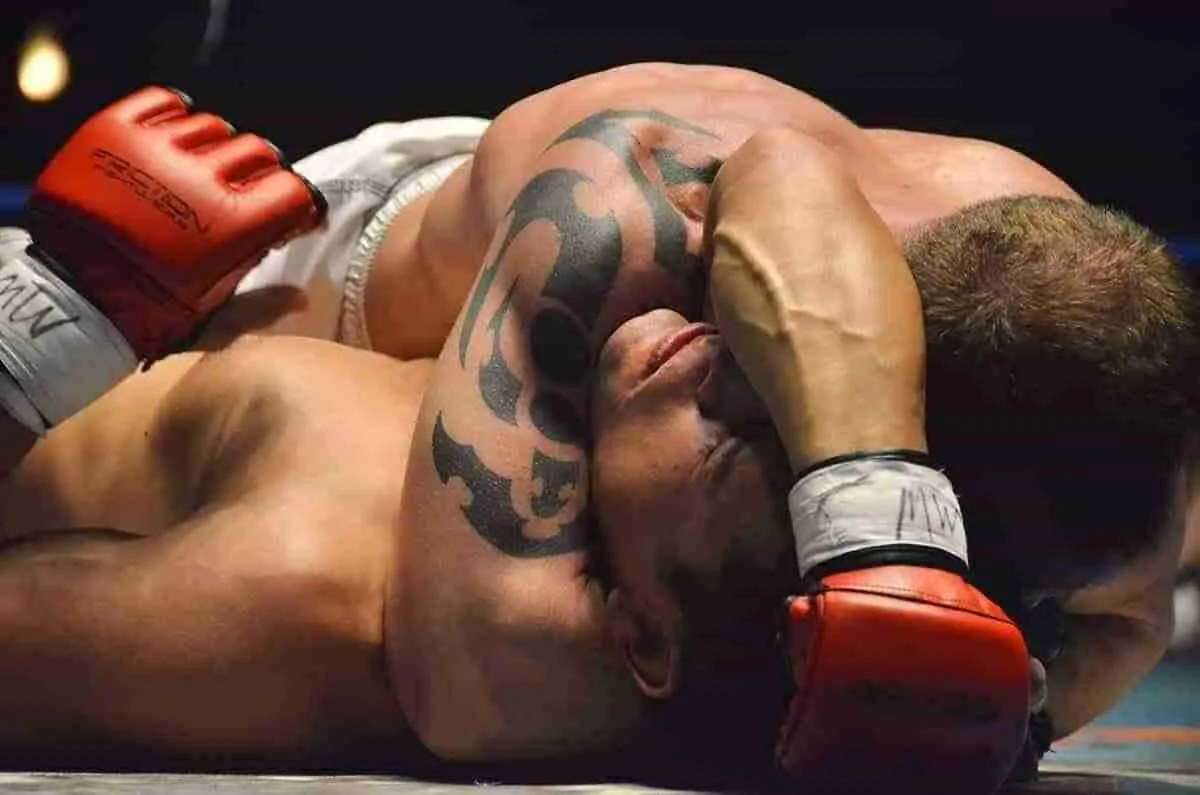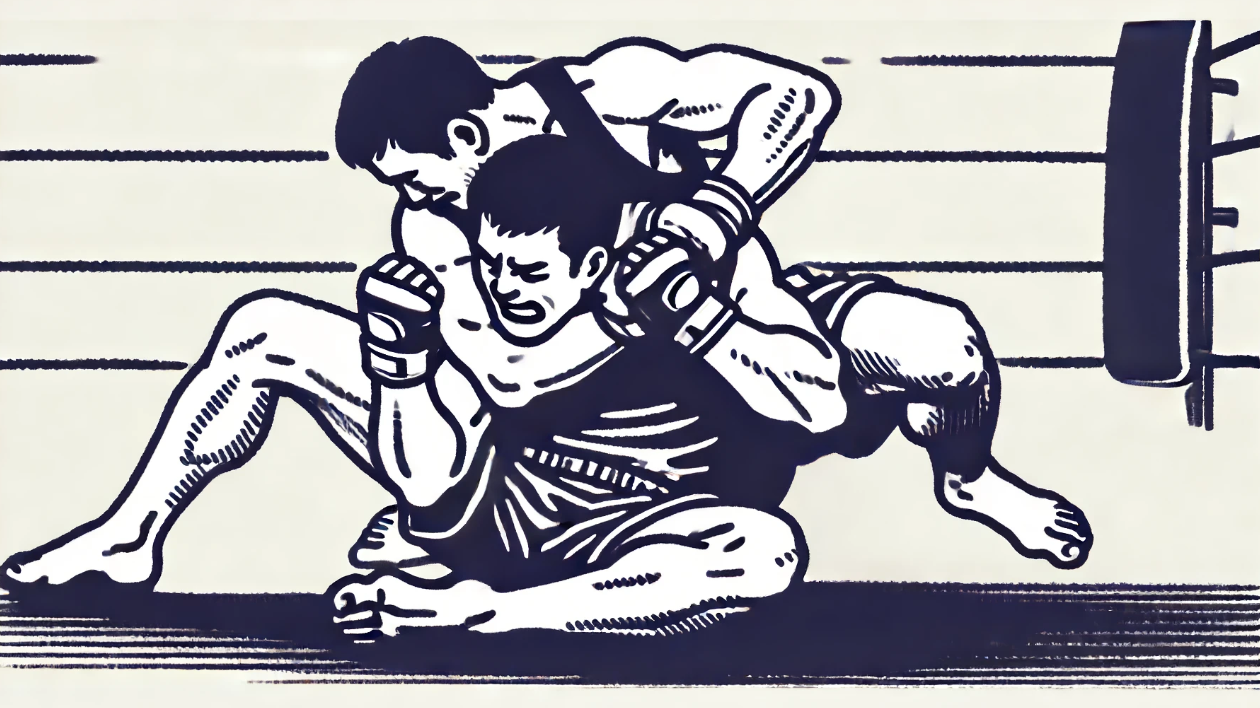Muay Thai Health&Safety
Understanding the Disadvantages of Muay Thai: A Beginner’s Guide
Introduction
Muay Thai, known as the “Art of Eight Limbs,” is a popular martial art that originates from Thailand. While it offers numerous benefits such as improved fitness, self-defense skills, and mental resilience, it’s essential to understand its disadvantages, especially for beginners. This guide delves into the various challenges and potential risks associated with Muay Thai, helping you make an informed decision about whether this martial art is right for you.
What is Muay Thai?
Muay Thai is a combat sport that uses stand-up striking along with various clinching techniques. This martial art utilizes punches, kicks, elbows, and knee strikes, making it a comprehensive and demanding form of physical activity.
History of Muay Thai
Muay Thai has deep roots in Thai culture and history, dating back centuries. It was initially developed as a form of close-combat that utilized the entire body as a weapon. Over the years, it has evolved into a regulated sport with established rules and widespread popularity.
Physical Demands of Muay Thai
Engaging in Muay Thai requires significant physical effort. The training is intense, involving a combination of cardiovascular exercises, strength training, and technical drills. This physical demand can be overwhelming for beginners, leading to fatigue and potential overtraining if not managed properly.

Risk of Injuries
Common Injuries
Muay Thai practitioners are prone to various injuries due to the high-impact nature of the sport. Common injuries include:
- Bruises and Contusions: Frequent strikes can cause bruising, especially on the legs and arms.
- Sprains and Strains: Joints and muscles can be overstretched or torn.
- Fractures: Bones, particularly in the hands and feet, are at risk of fractures.
- Cuts and Lacerations: Elbow and knee strikes can lead to cuts and require medical attention.
Long-Term Effects
Chronic injuries and repetitive strain can lead to long-term issues such as arthritis, joint problems, and persistent pain, which may affect one’s quality of life over time.
Prevention Techniques
Preventive measures include proper warm-ups, using protective gear, maintaining correct technique, and adhering to a well-structured training regimen to minimize injury risks.
Health Concerns
Cardiovascular Strain
The high-intensity nature of Muay Thai can put significant strain on the cardiovascular system. Individuals with pre-existing heart conditions should consult a physician before engaging in the sport.
Joint Problems
The repetitive impact on joints, especially knees and elbows, can lead to wear and tear, increasing the risk of joint disorders such as osteoarthritis.
Muscle Fatigue
Overtraining and inadequate recovery can result in severe muscle fatigue, leading to decreased performance and higher susceptibility to injuries.
Mental Challenges
Stress
The intense physical training and the competitive environment can contribute to increased stress levels. Managing this stress is crucial for maintaining mental well-being.
Anxiety
The fear of injuries or underperforming can lead to anxiety, which can negatively impact one’s training and overall experience in Muay Thai.
Psychological Impact of Injuries
Sustaining injuries can have a psychological toll, leading to frustration, decreased motivation, and even depression in some cases.
Time Commitment
Training Frequency
Effective Muay Thai training requires a significant time commitment. Practitioners often train multiple times a week, which can be challenging for those with busy schedules.
Time Management
Balancing Muay Thai training with work, family, and other responsibilities can be demanding. Good time management skills are essential to maintain this balance.
Balancing with Life
Finding a healthy balance between training and personal life is crucial to avoid burnout and ensure long-term sustainability in the sport.
Financial Costs
Equipment Costs
Purchasing gear such as gloves, shin guards, and protective equipment can be expensive, especially when considering the need for regular replacements due to wear and tear.
Training Fees
Gym memberships and coaching fees can add up, making Muay Thai a costly endeavor over time.
Medical Expenses
Injuries are common, and the associated medical costs, including physiotherapy and treatments, can be significant.

Not Suitable for Everyone
Age Considerations
Muay Thai is physically demanding and may not be suitable for very young children or older adults without proper modifications and supervision.
Pre-Existing Health Conditions
Individuals with certain health conditions, such as cardiovascular issues or severe joint problems, should approach Muay Thai with caution and seek medical advice beforehand.
Physical Limitations
Not everyone has the physical capacity to endure the rigorous demands of Muay Thai, and it’s important to recognize and respect personal limits.
Intense Training Requirements
Daily Routines
Muay Thai training often involves daily routines that include cardio workouts, strength training, and skill drills, which can be exhausting.
Strength and Conditioning
Building the necessary strength and conditioning for Muay Thai takes time and dedication, requiring consistent effort and discipline.
Skill Drills
Mastering the technical aspects of Muay Thai involves repetitive drilling of techniques, which can be monotonous and physically taxing.
Learning Curve
Technical Complexity
Muay Thai techniques can be complex and require time to learn and perfect. Beginners might find the initial learning curve steep and challenging.
Time to Mastery
Reaching a level of proficiency in Muay Thai takes years of consistent practice and dedication, which can be discouraging for those seeking quick results.
Importance of Consistency
Consistency is key in Muay Thai training. Irregular practice can hinder progress and lead to frustration.
Aggressive Nature
Sparring Intensity
Sparring is a fundamental part of Muay Thai, and its aggressive nature can be intimidating and physically demanding.
Competition Pressure
Competing in Muay Thai adds another layer of pressure, with the intense environment often leading to heightened stress and anxiety.
Emotional Toll
The aggressive nature of Muay Thai can take an emotional toll, leading to stress, frustration, and emotional fatigue.
Comparisons with Other Martial Arts
Less Flexibility
Muay Thai focuses heavily on striking and clinching, offering less flexibility in techniques compared to other martial arts that incorporate ground fighting or more varied striking techniques.
Higher Injury Rates
The full-contact nature of Muay Thai leads to higher injury rates compared to some other martial arts, which might have more controlled sparring environments.
Specific Skill Set
Muay Thai’s skill set is highly specific, which may limit cross-training opportunities with other martial arts.
Impact on Personal Life
Social Life
The demanding training schedule can limit time spent with friends and family, impacting social relationships.
Family Time
Balancing family commitments with the rigorous training required in Muay Thai can be challenging, potentially causing strain in family relationships.
Work Commitments
Finding time to train regularly while managing a full-time job can be difficult, requiring careful time management and prioritization.
Challenges for Beginners
Initial Struggles
Beginners often face initial struggles with the physical demands and learning the basics of Muay Thai, which can be discouraging.
Adapting to Physical Demands
Adapting to the intense physical demands of Muay Thai takes time and can be challenging for those new to the sport.
Learning Environment
The learning environment in Muay Thai gyms can vary, with some being more supportive than others. Finding the right gym is crucial for a positive experience.

Training Environment
Gym Culture
The culture of the gym can significantly impact the training experience. Some gyms may foster a more competitive or aggressive atmosphere, while others may be more supportive and inclusive.
Training Partners
Having good training partners is essential for safe and effective practice. The quality of training partners can vary greatly between gyms.
Instructor Quality
The skill and teaching ability of the instructor play a crucial role in a student’s progress and safety. Finding a knowledgeable and experienced instructor is vital.
Gender-Specific Issues
Gender Bias
Some Muay Thai gyms may have a bias towards male practitioners, which can affect the training experience for women.
Specific Challenges for Women
Women in Muay Thai may face unique challenges such as finding appropriately fitting gear, dealing with gender stereotypes, and navigating a predominantly male environment.
Support Systems
Having a support system, such as female training partners or a supportive community, can make a significant difference for women in Muay Thai.
Age-Related Challenges
Impact on Younger Practitioners
Young practitioners need tailored training programs to ensure they develop safely without overtraining or risking injury.
Older Adults
Older adults may require modifications to training routines to accommodate physical limitations and reduce the risk of injury.
Age-Specific Training
Different age groups have specific needs and limitations, and training programs should be adapted accordingly to ensure safety and effectiveness.
Balancing Muay Thai with Other Activities
Cross-Training
Incorporating other forms of exercise, such as yoga or strength training, can enhance overall fitness and reduce the risk of injury.
Recreational Activities
Balancing Muay Thai with other recreational activities is important to maintain a well-rounded and enjoyable lifestyle.
Work-Life Balance
Maintaining a healthy work-life balance while dedicating time to Muay Thai training requires careful planning and prioritization.
Dealing with Setbacks
Injury Recovery
Recovering from injuries requires patience and a proper rehabilitation plan to avoid re-injury and ensure full recovery.
Plateaus
Hitting a plateau in training can be frustrating. It’s important to stay motivated and try different training approaches to overcome these challenges.
Loss of Motivation
Maintaining motivation over the long term can be challenging. Setting goals and finding a supportive community can help sustain motivation.
Importance of Proper Guidance
Finding a Good Coach
A good coach can make a significant difference in a practitioner’s progress and safety. Look for experienced and knowledgeable coaches.
Structured Training Plans
Having a structured training plan helps ensure balanced development and reduces the risk of overtraining or neglecting certain aspects of training.
Mentorship
Mentorship from experienced practitioners can provide valuable insights and support, helping beginners navigate the challenges of Muay Thai.
Physical Limitations and Adaptations
Modifying Techniques
Adapting techniques to suit individual physical limitations is crucial to prevent injuries and ensure effective training.
Understanding Limits
Knowing and respecting personal limits is important to avoid overtraining and injuries.
Alternative Exercises
Incorporating alternative exercises can help build strength and flexibility while accommodating physical limitations.
Mental Resilience
Building Toughness
Developing mental toughness is essential for handling the physical and psychological demands of Muay Thai.
Handling Defeats
Learning to handle defeats and setbacks positively is crucial for long-term success in Muay Thai.
Staying Motivated
Finding ways to stay motivated, such as setting goals and celebrating small victories, can help sustain long-term commitment.
Diet and Nutrition
Fueling the Body
Proper nutrition is essential for fueling the body and supporting intense training sessions.
Supplements
Using supplements wisely can enhance performance and recovery, but they should be used in conjunction with a balanced diet.
Recovery Nutrition
Consuming the right nutrients after training helps speed up recovery and rebuild muscle tissue.
Recovery and Rest
Importance of Rest
Adequate rest is crucial for recovery and preventing overtraining. It’s important to schedule rest days into the training routine.
Recovery Techniques
Incorporating techniques such as stretching, massage, and proper hydration can enhance recovery.
Overtraining Risks
Overtraining can lead to injuries and burnout. It’s important to listen to the body and adjust training intensity as needed.
Safety Measures
Protective Gear
Using appropriate protective gear, such as gloves, shin guards, and mouthguards, is essential for safety during training and sparring.
Safe Training Practices
Following safe training practices, such as proper warm-ups and cool-downs, helps prevent injuries.
Emergency Protocols
Knowing and following emergency protocols in the gym can help manage injuries effectively when they occur.
Alternatives to Muay Thai
Other Martial Arts
Exploring other martial arts, such as Brazilian Jiu-Jitsu or Taekwondo, can provide different benefits and training experiences.
Low-Impact Sports
Engaging in low-impact sports like swimming or cycling can offer a good alternative for those looking for less intense physical activity.
Fitness Alternatives
Fitness activities such as yoga or Pilates can complement or replace Muay Thai for those seeking a different approach to physical fitness.
Real-Life Experiences
Testimonials
Hearing from other practitioners can provide valuable insights into the challenges and rewards of Muay Thai.
Stories from Practitioners
Real-life stories from Muay Thai practitioners can offer inspiration and practical advice for beginners.
Lessons Learned
Learning from the experiences of others can help beginners avoid common pitfalls and make informed decisions.
Future of Muay Thai
Evolution of the Sport
Muay Thai continues to evolve, with new training methods and adaptations making it more accessible and safer.
Trends
Staying informed about trends in Muay Thai can help practitioners stay up-to-date with the latest training techniques and safety practices.
Adaptations for Modern Times
Adapting Muay Thai for modern times involves incorporating new safety measures, training techniques, and making it more inclusive for all.
Conclusion
Muay Thai is a challenging but rewarding martial art that offers numerous benefits. However, it’s important to be aware of its disadvantages, including the risk of injuries, the physical and mental demands, and the time and financial commitments required. By understanding these challenges, beginners can make informed decisions and approach Muay Thai with the right mindset and preparation.
FAQs
What are the most common injuries in Muay Thai?
Common injuries in Muay Thai include bruises, sprains, strains, fractures, and cuts. Proper technique, protective gear, and a good warm-up routine can help reduce these risks.
How can beginners manage the physical demands of Muay Thai?
Beginners can manage the physical demands of Muay Thai by starting slowly, incorporating rest days, and gradually increasing training intensity. It’s also important to maintain proper nutrition and hydration.
Is Muay Thai suitable for older adults?
Muay Thai can be suitable for older adults with proper modifications and supervision. It’s important to consult with a healthcare provider before starting and to adjust training intensity based on individual fitness levels and physical limitations.
How expensive is it to practice Muay Thai?
Practicing Muay Thai can be expensive due to the costs of equipment, training fees, and potential medical expenses from injuries. It’s important to budget accordingly and consider these factors before starting.
What should I look for in a Muay Thai gym?
When looking for a Muay Thai gym, consider factors such as the quality of instructors, the gym culture, the availability of protective gear, and the supportiveness of the training environment.
How can I stay motivated in my Muay Thai training?
Staying motivated in Muay Thai training can be achieved by setting specific goals, tracking progress, seeking support from training partners and coaches, and celebrating small achievements along the way.

